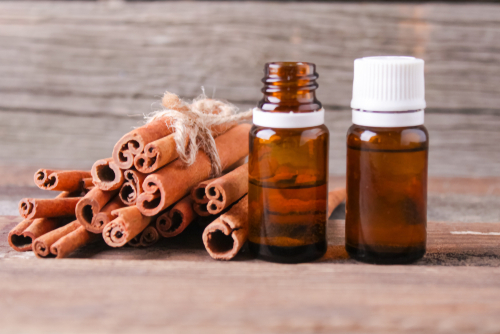Cinnamon Oil Compound Might Block Bacteria Like P. aeruginosa from Forming Biofilms, Researchers Say
Written by |

A natural component found in cinnamon oil, known as cinnamaldehyde or CAD, may be able to prevent Pseudomonas aeruginosa bacteria from spreading in an organism and inhibit their ability to form antibiotic-resistant biofilms, researchers show.
These findings may support further study into anti-microbial medications that can help control the behavior of these so-called superbugs, or treatment-resistant bacteria, which represent a serious healthcare problem for people with cystic fibrosis and other diseases.
The discovery was reported in “Cinnamaldehyde disrupts biofilm formation and swarming motility of Pseudomonas aeruginosa,” published in the journal Microbiology.
“Humans have a long history of using natural products to treat infections, and there is a renewed focus on such antimicrobial compounds,” Sanjida Halim Topa, PhD, a researcher at Swinburne University of Technology in Australia, and lead study author, said in a university news release. “Natural products may offer a promising solution to this problem.”
Cinnamaldehyde, one of the major components of cinnamon oil, is responsible for its characteristic flavor. This compound is known to have antimicrobial activity against many bacteria, including P. aeruginosa; a stomach ulcer-causing bacteria called Helicobacter pylori; and Listeria monocytogenes, which is responsible for the food-borne infection listeriosis.
“We hypothesized that using natural antimicrobials, such as essential oils, might interfere in [drug-resistant] biofilm formation,” Topa said. “Though many previous studies have reported antimicrobial activity of cinnamon essential oil, it is not widely used in the pharmaceutical industry.”
Working with researchers at Nanyang Technological University in Singapore, the team conducted several experiments to evaluate the impact of different concentrations of cinnamaldehyde on P. aeruginosa biofilms.
They found that non-lethal amounts of the essential oil compound could disrupt by 75.6 % antibiotic-resistant, preformed P. aeruginosa biofilms. Cinnamaldehyde was found to prevent the production of a bacterial-signaling protein essential for bacteria communication and biofilm formation. [Biofilms, or microbe communities whose growth is facilitated by the thick and sticky mucus that marks CF, are known to promote antibiotic resistance in P. aeruginosa lung infections.]
In a concentration-dependent manner, cinnamaldehyde also could reduce the motility of the bacteria, preventing them from spreading elsewhere, the scientists reported.
These findings, the researchers wrote, show “CAD can disrupt biofilms and other surface colonization phenotypes through the modulation of intracellular signalling processes.”
They are now investigating the use of cinnamaldehyde embedded-wound dressings as a way to treat skin infections.






